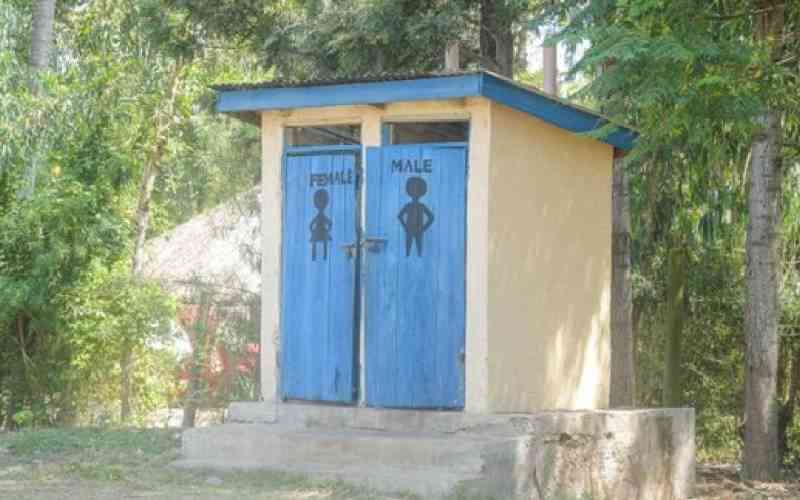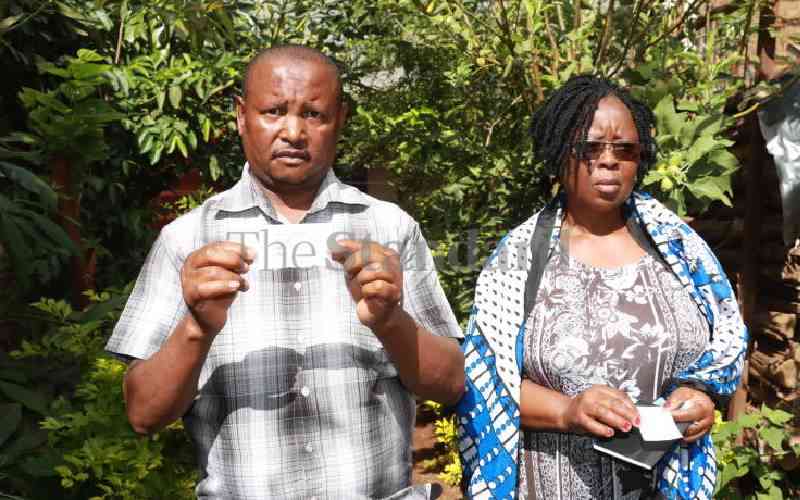
In recent years, global efforts to improve sanitation have made undeniable progress. However, the data remains stark: 3.6 billion people worldwide still lack access to safely managed sanitation, according to the WHO.
The Kenya Demographic Health Survey 2022 shows that 41 per cent of Kenyans have access to basic sanitation services. However, Unicef reports that 13 per cent of the population still depends on unsafe or shared sanitation facilities, leaving millions at avoidable health risk. Also dampening is that 85 per cent of open defecation happens in just 15 counties, including Turkana, Samburu, Tana River, Marsabit, Wajir and Kilifi.
As we look toward ambitious global health goals, investing in resilient sanitation systems is not just about preventing disease—it’s about building healthier, more resilient communities.
The Covid-19 pandemic underscored the importance of basic sanitation. Handwashing and clean facilities became critical tools in preventing the virus’ spread, putting a spotlight on long-standing sanitation gaps, particularly in rural and underserved urban areas. Beyond Covid, the Epuka Uchafu (Avoid Dirt) campaign to promote cleanliness and safe sanitation practices aims to reduce cholera, typhoid and other waterborne diseases. In collaboration with the government, Amref works to ensure the campaign’s messages resonate with communities across the country. It is supporting these efforts by facilitating community engagement, educating the public on sanitation, and collaborating with local leaders to reach underserved areas.
Resilient sanitation systems are designed to withstand and adapt to challenges, be they economic, environmental or social. In regions where climate change is amplifying extreme weather events, resilient systems mean that heavy rains won’t wash sewage into water sources, spreading waterborne illnesses such. Kenya’s own climate crisis—marked by recurrent droughts and flash floods—has further strained sanitation infrastructure, making resilience an urgent priority.
The World Bank estimates that unsafe sanitation costs Kenya about Sh41.8 billion per year in healthcare expenses, lost productivity and the long-term impact on public health. Addressing these losses requires a proactive approach, building sanitation systems that are both sustainable and responsive to environmental stressors.
A model project in Turkana is addressing local needs through the enhanced community-led total sanitation (CLTS) approach. In the programme by the World Relief, communities are directly involved in identifying sanitation needs and managing latrine projects, ensuring facilities reflect local preferences. This approach fosters local ownership and builds financial resilience, as households can fund their sanitation projects. This enables communities to sustainably maintain their sanitation infrastructure.
Another sustainable approach by Amref Kenya combines community-driven initiatives with innovative financial models like the Financial Inclusion Improves Sanitation and Health (Finish) programme, which collaborates with local financial institutions to offer affordable loans to households. These loans enable families to build or upgrade sanitation facilities, significantly reducing the prevalence of open defecation and encouraging sustainable hygiene practices. There is also the WaterStarters model, which provides safe water access through sustainable and professionalised water resource management. This programme combines financing solutions and digital monitoring technologies to ensure that communities receive reliable water services, reducing their exposure to unsafe water and poor sanitation.
Resilient sanitation systems must also consider the broader needs of communities. For instance, sanitation facilities designed without women and girls in mind can heighten the risks of sexual harassment and assault, and also lead to absenteeism in schools, especially during menstruation. Approximately 130,000 children with disabilities are enrolled in formal public schools and require specialised access to WASH facilities to meet their needs. Building resilience, therefore, means designing systems that are inclusive, accessible and sustainable.
The solutions are within reach, but they require sustained financing. For every dollar invested in sanitation, WHO estimates a return of $5.50 in reduced healthcare costs, increased productivity, and prevented deaths. Scaling up proven interventions such as CLTS could greatly transform health outcomes.
As we face the future, resilient sanitation systems are an essential foundation for public health. They protect against disease, support education and empower women—building blocks of a thriving society. Stakeholders must work together to fund and implement resilient sanitation solutions, making good on the promise of health for all.
- Asiko is the Head of Communications at Amref Health Africa in Kenya while Onyango is World Relief Business Development Director
 The Standard Group Plc is a
multi-media organization with investments in media platforms spanning newspaper
print operations, television, radio broadcasting, digital and online services. The
Standard Group is recognized as a leading multi-media house in Kenya with a key
influence in matters of national and international interest.
The Standard Group Plc is a
multi-media organization with investments in media platforms spanning newspaper
print operations, television, radio broadcasting, digital and online services. The
Standard Group is recognized as a leading multi-media house in Kenya with a key
influence in matters of national and international interest.
 The Standard Group Plc is a
multi-media organization with investments in media platforms spanning newspaper
print operations, television, radio broadcasting, digital and online services. The
Standard Group is recognized as a leading multi-media house in Kenya with a key
influence in matters of national and international interest.
The Standard Group Plc is a
multi-media organization with investments in media platforms spanning newspaper
print operations, television, radio broadcasting, digital and online services. The
Standard Group is recognized as a leading multi-media house in Kenya with a key
influence in matters of national and international interest.









